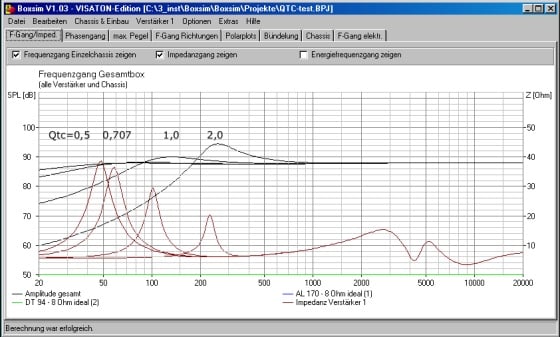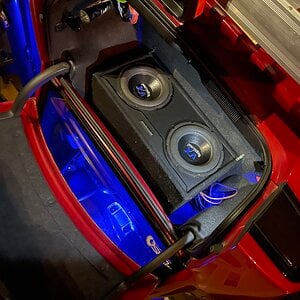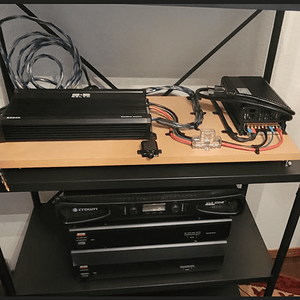I understand that subs put in overly large boxes will lose output above Fb. And if the box is too small, you will gain output above Fb.
Doesn't the excursion INCREASE as the box gets SMALLER, and the excursion DECREASES as the box gets LARGER?
From what I understand, if the box is too large, the woofer relies on mechanical suspension to control the cone. The motor will struggle to get the cone moving in the opposite direction because of the contending momentum. This leads to the signal being fed into the voice coil and the woofers position being out of phase somewhat, which leads to less excursion.
If the box is too small, the air spring controls the woofers momentum better than the mechanical suspension or motor force. This way, the motor does not have to struggle slowing down the cone to change its direction of movement. As soon as the signal phase changes, the cone has already been deaccelerated by the air spring, and therefore would be more in phase in movement with the signal, giving the cone larger excursion.
Discuss......
Doesn't the excursion INCREASE as the box gets SMALLER, and the excursion DECREASES as the box gets LARGER?
From what I understand, if the box is too large, the woofer relies on mechanical suspension to control the cone. The motor will struggle to get the cone moving in the opposite direction because of the contending momentum. This leads to the signal being fed into the voice coil and the woofers position being out of phase somewhat, which leads to less excursion.
If the box is too small, the air spring controls the woofers momentum better than the mechanical suspension or motor force. This way, the motor does not have to struggle slowing down the cone to change its direction of movement. As soon as the signal phase changes, the cone has already been deaccelerated by the air spring, and therefore would be more in phase in movement with the signal, giving the cone larger excursion.
Discuss......



